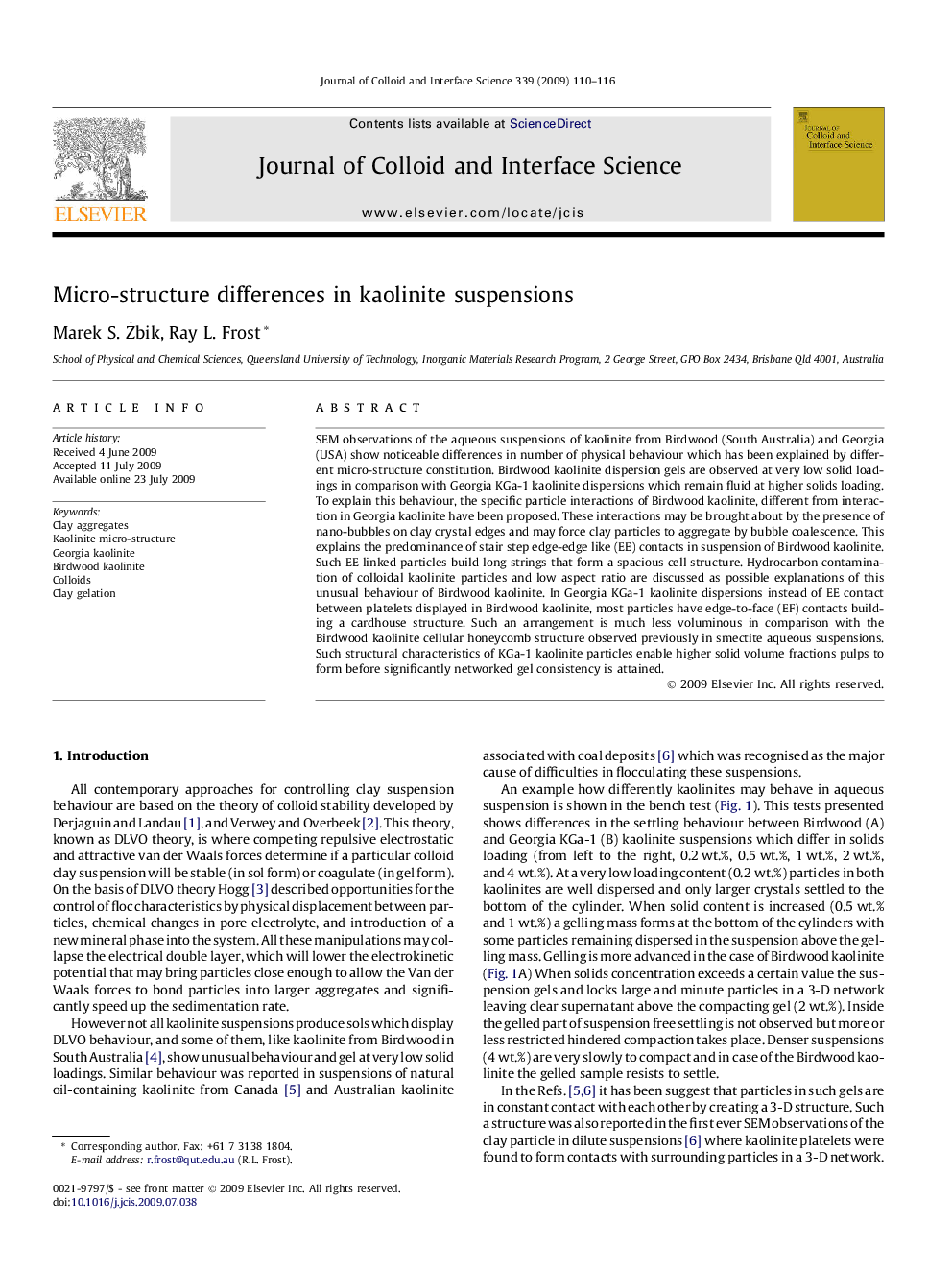| Article ID | Journal | Published Year | Pages | File Type |
|---|---|---|---|---|
| 609976 | Journal of Colloid and Interface Science | 2009 | 7 Pages |
SEM observations of the aqueous suspensions of kaolinite from Birdwood (South Australia) and Georgia (USA) show noticeable differences in number of physical behaviour which has been explained by different micro-structure constitution. Birdwood kaolinite dispersion gels are observed at very low solid loadings in comparison with Georgia KGa-1 kaolinite dispersions which remain fluid at higher solids loading. To explain this behaviour, the specific particle interactions of Birdwood kaolinite, different from interaction in Georgia kaolinite have been proposed. These interactions may be brought about by the presence of nano-bubbles on clay crystal edges and may force clay particles to aggregate by bubble coalescence. This explains the predominance of stair step edge-edge like (EE) contacts in suspension of Birdwood kaolinite. Such EE linked particles build long strings that form a spacious cell structure. Hydrocarbon contamination of colloidal kaolinite particles and low aspect ratio are discussed as possible explanations of this unusual behaviour of Birdwood kaolinite. In Georgia KGa-1 kaolinite dispersions instead of EE contact between platelets displayed in Birdwood kaolinite, most particles have edge-to-face (EF) contacts building a cardhouse structure. Such an arrangement is much less voluminous in comparison with the Birdwood kaolinite cellular honeycomb structure observed previously in smectite aqueous suspensions. Such structural characteristics of KGa-1 kaolinite particles enable higher solid volume fractions pulps to form before significantly networked gel consistency is attained.
Graphical abstractSEM micrographs of Georgia KGa-1 kaolinite show mostly edge-to-face platelet orientation.Figure optionsDownload full-size imageDownload as PowerPoint slide
